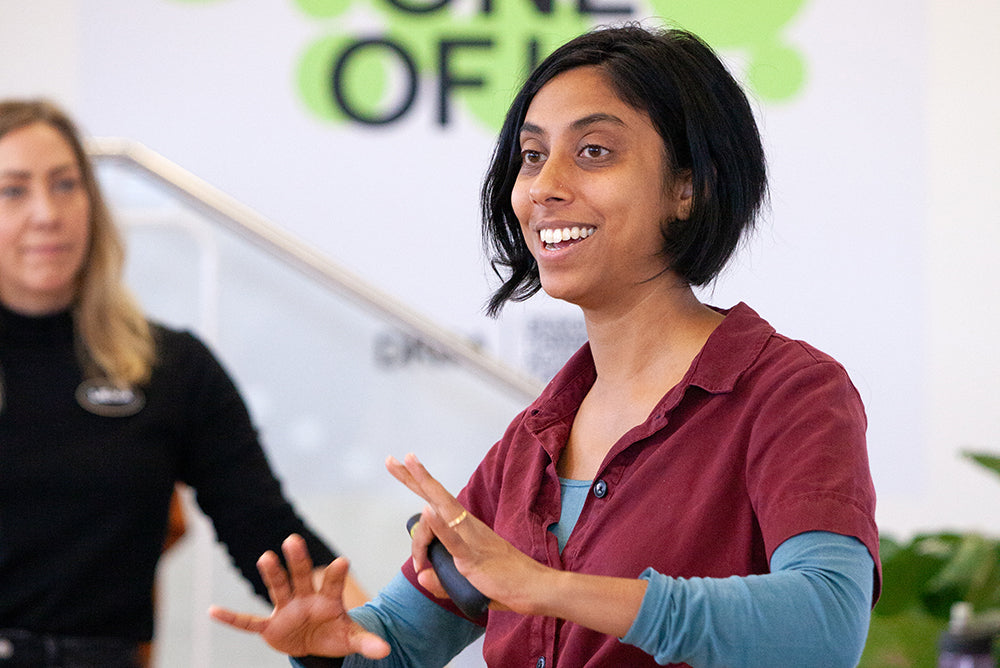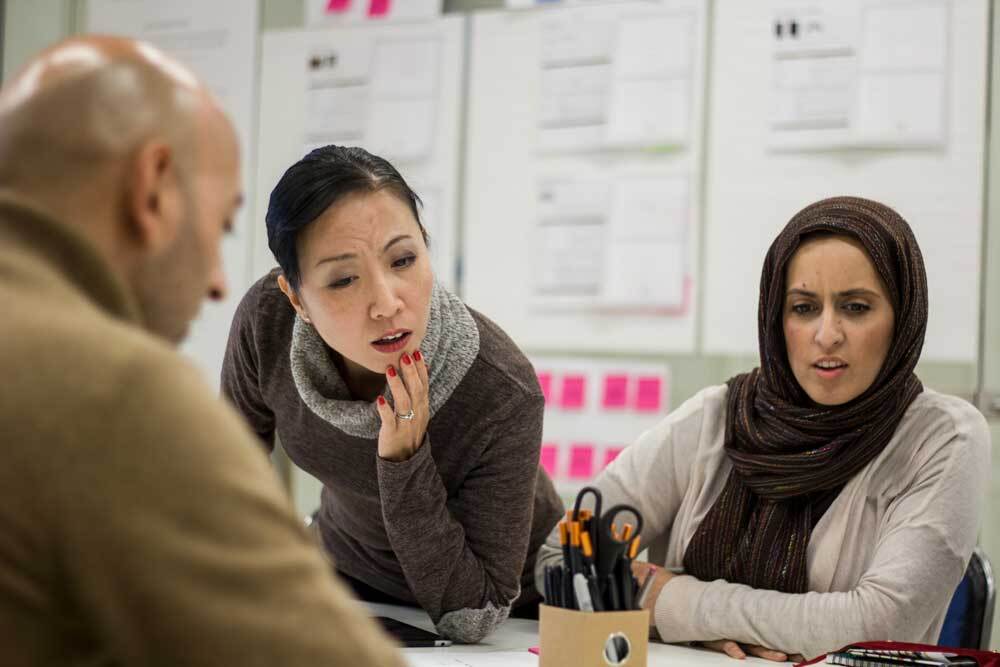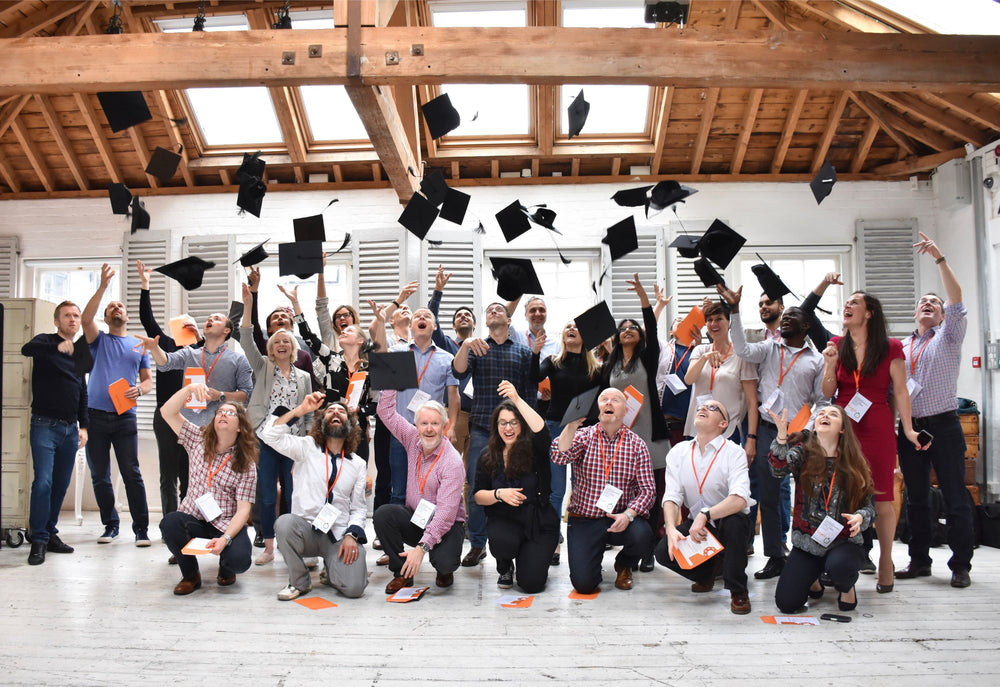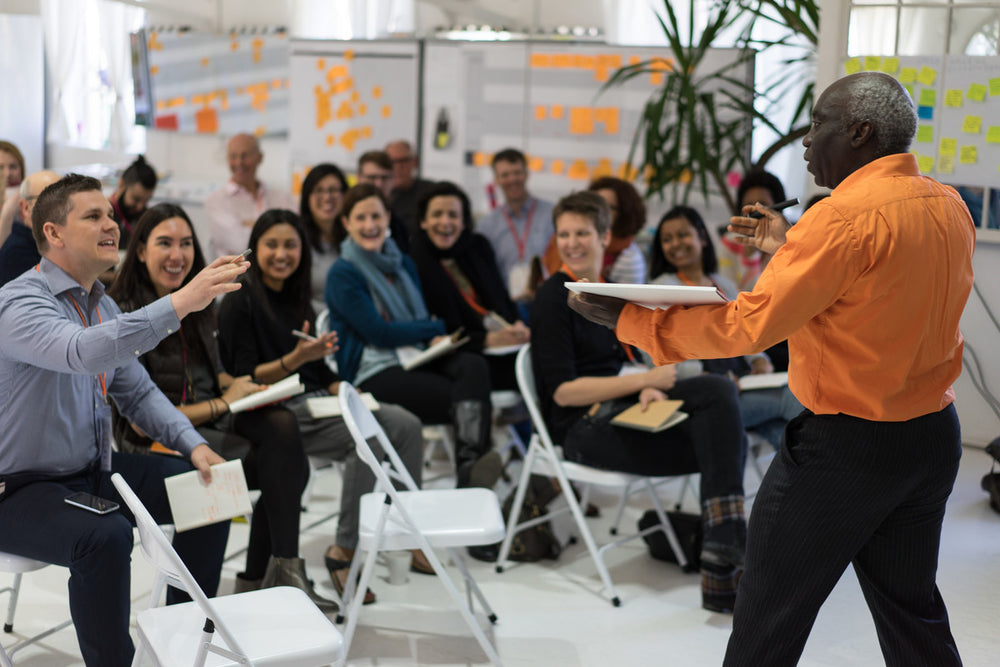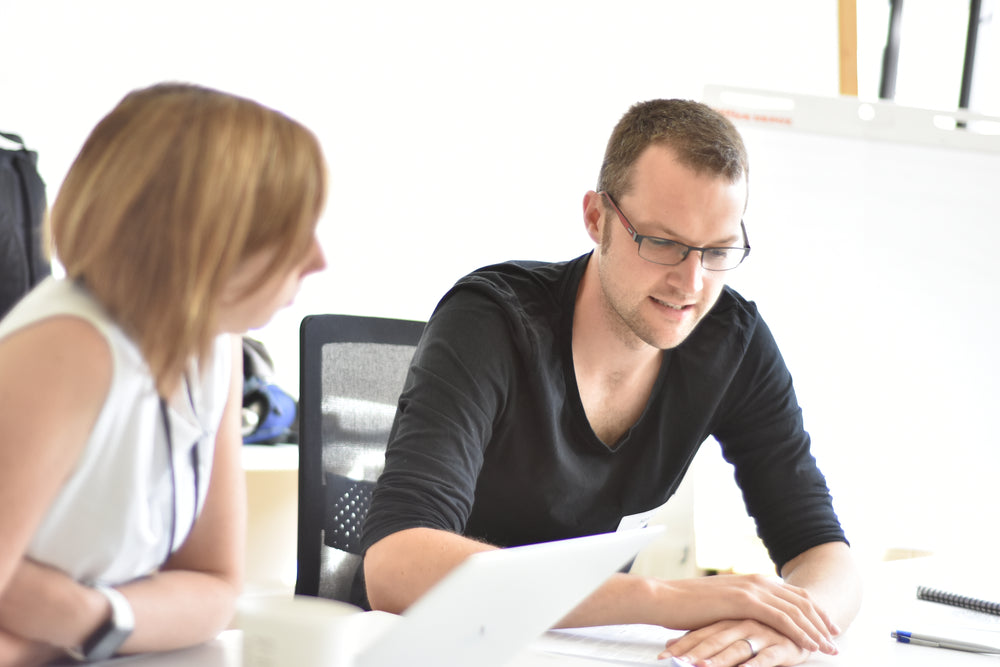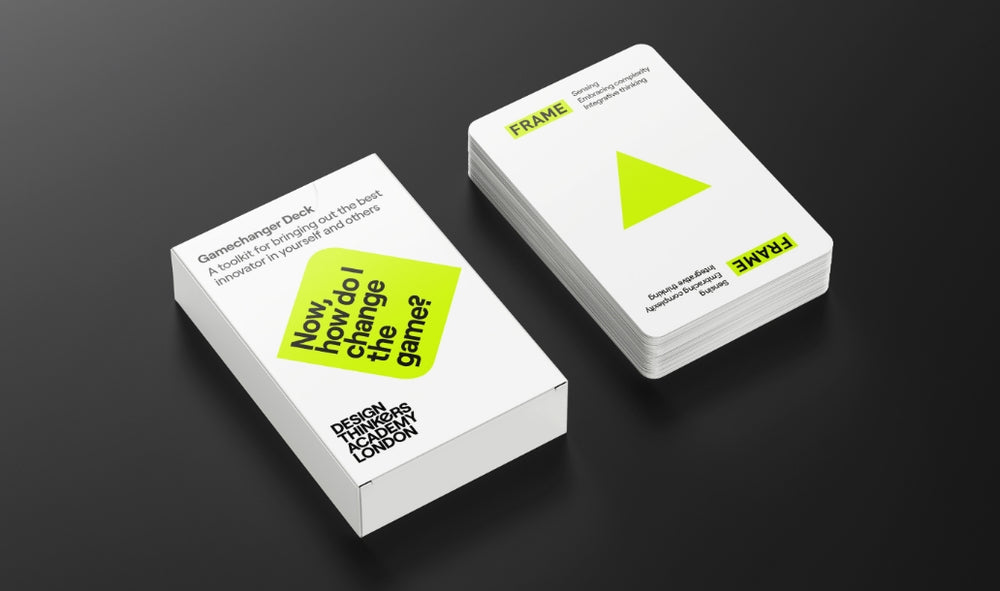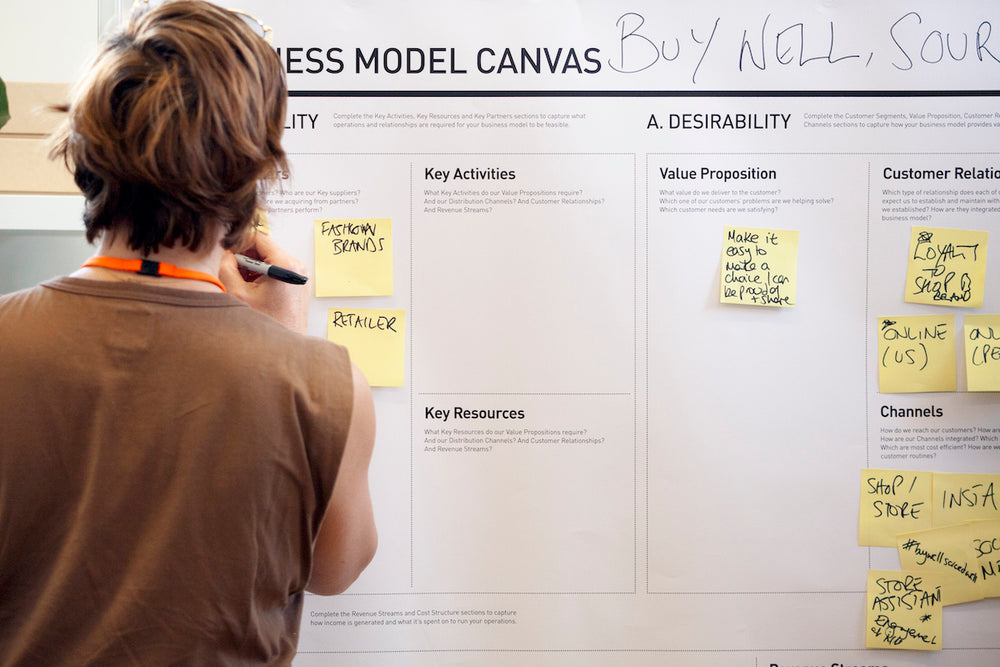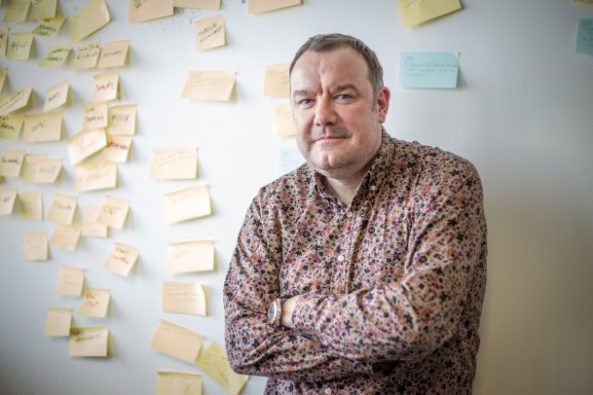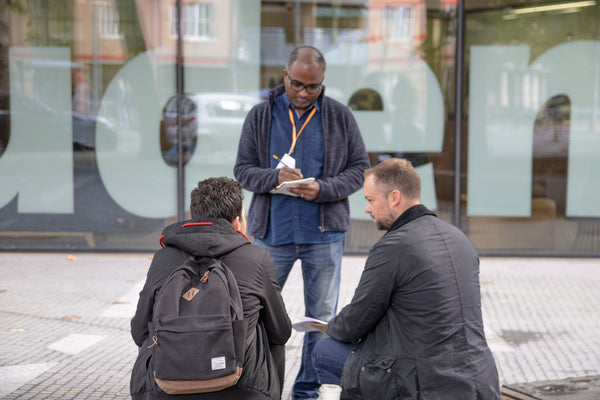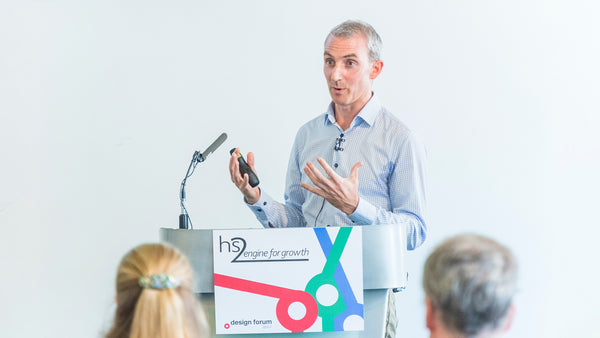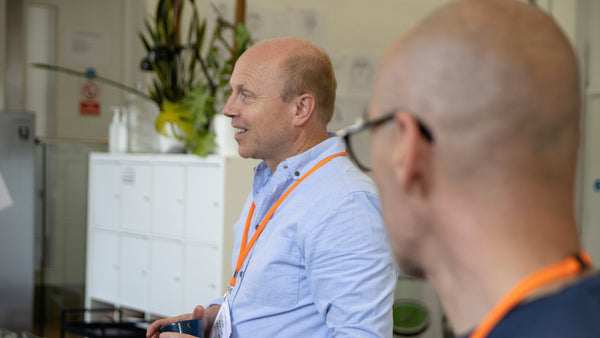Richard Beaumont is the Head of Digital Design at Direct Line Group. He participated at our last Design Thinking Facilitation course and with this blog, explains the reasons why he decided to join the course. He reflects on what he learned on the course and how he can share this within its team.
I’m part of the Digital leadership team at Direct Line Group where I’m responsible for digital design and experience across our portfolio of brands.
Over the years, I’ve worked in agencies and client side, and these are a few things I’ve learned along the way:
- You can’t do everything – you’ve got to trust and empower people to do great work
- You’ve got to keep learning, and the best way of learning is by doing
- You don’t know everything
It’s working client side that I’ve really learned the value of designers getting as close to a business as they possibly can, and how creativity in all its forms can help to add value from within a business.
Here’s a quote I like:
"The role of a creative leader is not to have all the ideas; it’s to create a culture where everyone can have ideas and feel that they’re valued. Sir Ken Robinson. It’s one that I keep reminding myself that I should take more note of."
As far as design thinking goes, when you strip away the blog posts, the books and the consultant speak (I had to look up what ‘divergent thinking’ means) design thinking principles are very simple.
The essence of design thinking is a powerful mix of common sense, an inquisitive mindset and a liberal sprinkling of sideways creative thinking.
Design thinking assumes that in a complex corporate environment, one person, department or function doesn’t have all the answers. It acknowledges that good ideas can come from anywhere, from anyone and at anytime.
It’s about getting the right people in the room, encouraging them to leave their egos and pre-conceptions at the door, to solve a problem by working together and creating something.
Easy yeah?
Err, not quite. Large organisations are complicated things with many moving parts, different perspectives and established systems and processes.
That’s why we decided to invest in a two-day facilitators workshop with the Design Thinkers Academy London, to help us start to understand how established practitioners approach these complex issues.
We wanted to get insights, stories, tools and whatever else we could get from guys who have cut their teeth facilitating creative workshops in corporate environments.
Over the two days, the team at the Design Thinkers Academy London delivered straight-to-the-point insightful ‘learning by doing’ training which really helped us form the ideas and approaches that we needed to take back into our workplace.

Over the years, I’ve taken part in and facilitated many ‘ideation’ (hate that word) sessions, and I’ve enjoyed doing them. But taking the time to learn, to listen, to hear, to absorb and to work with people from outside of my industry really helped me to see things from different perspectives.
By broadening our horizons, we’ve come to realise the huge potential of design thinking for an organisation like ours – and it’s not just about making digital products and services more useful for our customers.
We’re creating our own design thinking toolkits and processes, tailored to suit the environment and industry we work in.
"We’re employing design thinking techniques to help us do what we do better."
We’ve started using design thinking principles to help us create better and more useful digital business tools. We’re prototyping these new digital products using design thinking techniques as the starting point.
We’re starting with the problem, not the solution.
One of our digital delivery principles is that if an ‘off the shelf’ product requires more than 90% of reworking to suit our requirements, then we’ll look at building that product ourselves. design thinking plays a huge role in enabling this principle.
But it’s not all about digital.
We’re using design thinking to help define requirements for our upcoming office move.
It’s a big deal. We’re moving the entire digital team of about 130 people back to our corporate HQ. We want their views and input to be at the heart of our solution. We want their help with everything from desks, our office layout (we’re an Agile team organised around Scrum), collaboration spaces, kitchens, the lot.
It’s early days, and we’re not sure where this whole design thinking thing will lead to, but as they say it’s about the journey, not the destination.
And we’re quite interested to see where that journey takes us.
